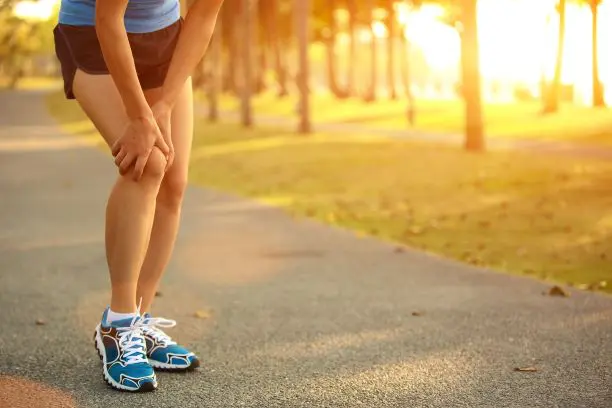Patellofemoral pain syndrome, also referred to as runner’s knee or patellofemoral tracking disorder, is a common injury in mostly younger runners and ails twice as many women as men. Patellofemoral pain syndrome symptoms are generally limited to pain in and around the knee cap, but the pain can range from a sudden sharp pain to a dull ache. The area affected is where the patella (kneecap) rests on the thighbone. It is caused by poor biomechanics in the knee that can be traced to tight hamstring, calf muscles or poorly conditioned quadriceps. Having shoes that do not fit properly or do not support your foot can cause many issues including patellofemoral pain syndrome. Runners may be less aware of having patellofemoral tracking disorder because it may not bother them while running, but after they have completed their run.
As with most running injuries, rest can help to alleviate patellofemoral pain syndrome for a short period of time, but it is not going to cure it. Dr. Royer has had great success in treating people with patellofemoral tracking disorder. He uses Kinesio Tape to help to support the patella so it is not causing friction in the knee. Depending on the level of the injury he may need to use Graston Technique to break up scar tissue that has built up from the ongoing friction. Dr. Royer will work to get to the root of problem and teach the patient exercises to strength their quadriceps that might be lacking. He also is trained in making custom fit orthotics that can help many other running issues, not just patellofemoral pain syndrome .
If you of someone you know is suffering from patellofemoral pain syndrome, have them call our office today.

Patellofemoral pain syndrome, also referred to as runner’s knee or patellofemoral tracking disorder, is a common injury in mostly younger runners and ails twice as many women as men. Patellofemoral pain syndrome symptoms are generally limited to pain in and around the knee cap, but the pain can range from a sudden sharp pain to a dull ache. The area affected is where the patella (kneecap) rests on the thighbone. It is caused by poor biomechanics in the knee and leg that can be traced to tight hamstring, calf muscles or poorly conditioned quadriceps. Having shoes that do not fit properly or do not support your foot can cause many issues including patellofemoral pain syndrome. Runners may be less aware of having patellofemoral tracking disorder because it may not bother them while running, but after they have completed their run.

As with most running injuries, rest can help to alleviate symptoms for a short period of time, but it is not going to cure it. Dr. Royer has had great success in treating people with patellofemoral tracking disorder. He uses Kinesio Tape to help to support the patella so it is not causing friction in the knee. Depending on the level of the injury he may need to use Graston Technique to break up scar tissue that has built up from the ongoing friction. Dr. Royer will work to get to the root of problem and teach the patient exercises to strength their quadriceps, hips and feet that might be lacking. He also is trained in making custom fit orthotics that can help many other running issues, not just patellofemoral pain syndrome. And chiropractic adjustments can also help decrease problems related to this condition according to a published study.
If you of someone you know is suffering from patellofemoral pain syndrome, have them call our office today.
